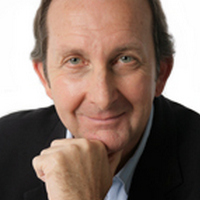

Aussie retailers love the US-created Black Friday and the ensuing Cyber Monday because it’s great news for their bottom lines. However, it might be in the interests of interest rate worriers if this proves to be the worst Black Friday ever!
Why? Well, this economy of ours has defied 13 rate rises, unemployment hasn’t increased, and all the Australians largely not hit by higher home loan repayments and ratcheting rising rents have been spending high enough to not push inflation down to justify a Reserve Bank rate cut.
Before explaining why interest rate worriers should hope for a weaker-than-usual Black Friday, let’s do some history.
There’s no Wall Street market data today because the Yanks are celebrating their beloved Thanksgiving, which remembers a get-together of the English Colonists and the Wampanoag Indian tribe to give thanks for the 1621 harvest feast. It’s a day that turkeys don’t look forward to and the day after modern Americans do what they’re famous for —shop until they drop!
It's this Friday (which always follows the fourth Thursday in November because of the legendary price discounts stores offer on the first day of the holiday season that takes in Hanukkah and then Christmas), retailers finances go into the black. The ‘black’ in Black Friday is what accountants celebrate as it’s the opposite of “the red”, which is a condition that businesses try to avoid and bean counters despise.
Clearly, local retailers want a great Black Friday of sales. And news headlines show everyone is getting in on the act.
Virgin Australia is launching a massive sale, Sony’s PlayStation 5 Slim has been drastically discounted, Nike is cutting 25% off prices with its GOBIG24 and the price-cutting is great for so many goods and services, you’d have to think this would be great for inflation. Think again.
Yep, headline inflation will fall in the months of November and December because of Black Friday but the price hikes after this momentous weekend, when desperate Christmas shoppers become victims of the festive frenzy to get ‘stuff’, could slightly offset the inflation gains, thanks to Thanksgiving and all it has delivered on modern retail.
But there’s another inflation irony. You see, the inflation that the Reserve Bank cares about is underlying inflation, which strips out temporary or volatile price changes (both up and down) so the great price drops will help headline inflation, now at 2.1% but not underlying inflation at 3.5%.
Nope, only a kick-in-the-guts for the growth of our economy will do that. And to date, those 13 rate rises haven’t done the trick.
This week the Kiwis cheered an official cash rate cut of 50 basis points (or half-a-percent) to a two-year low of 4.25%, as expected, with their Reserve Bank saying, “a second consecutive super sized cut was justified by slowing inflation and weaker economy”.
This followed a 50-point cut in October, so our cross- the-ditch cousins have had a 1% cut in rates over two months.
How come? Simply, their central bank took the cash rate to 5.25%. It ripped into their spending and economic growth and inflation is on the slide.
This is what RNZ.co.nz reported yesterday: “Economists had overwhelmingly forecast the big cut as the economy remained weak, households and businesses kept tight control on spending and investment, and the unemployment rate kept rising.
The RBNZ acknowledged the weak state of the economy, but said there were signs an improvement was coming now that inflation was back in its 1-3 percent target band”.
Unemployment in the Shaky Isles is 4.8%, while our jobless rate is 4.1%. After digesting the recent speech by the Reserve Bank governor, The SMH’s Shayne Wright put a number on how many people have to lose their jobs for a rate cut to be a reality. “Up to 75,000 Australians face being shut out of a job as the Reserve Bank attempts to bring down inflation as bank governor Michele Bullock admits the nation’s “unusually tight” jobs market is a factor pushing up prices,” he revealed. “In a blow to the government’s hopes of a pre-election interest rate cut early next year, Bullock told the Committee for Economic Development of Australia that while quarterly headline inflation had fallen to 2.8 per cent, which was within the bank’s 2-3 per cent target range, underlying inflation was still at 3.5 per cent.
She said a key issue was the jobs market, which, by comparison with other nations, remained strong.”
The irony of this speech was that Bullock should have said: “We have let those who want rate cuts down, but we have kept more people off the dole queues than the Kiwis!”
Enjoy your Black Friday purchases but don’t think you’re doing those sweating on lower inflation any big favours. People have to lose jobs for that to happen, which is another reason why economics is called “the dismal science”!